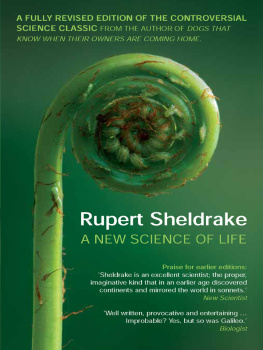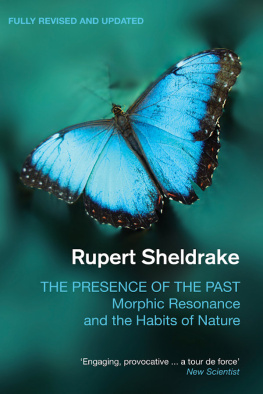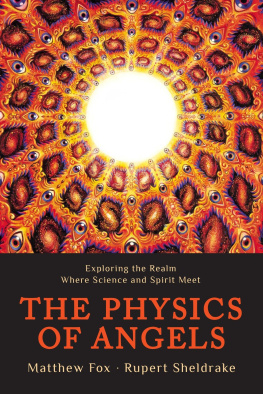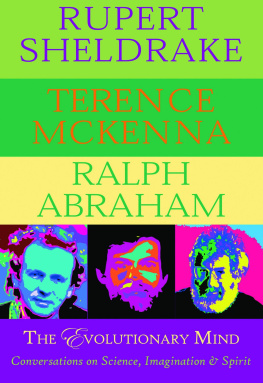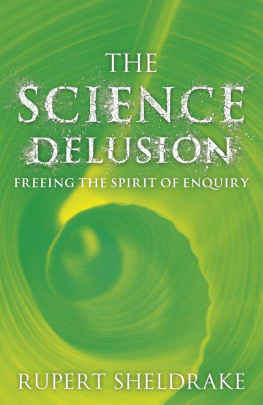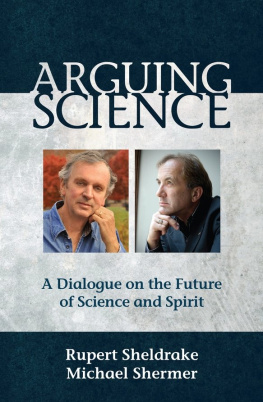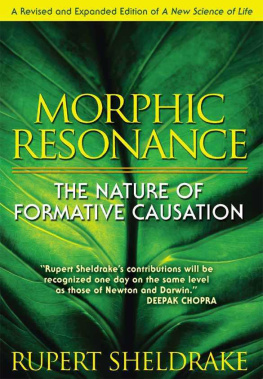
Comments on previous editions of A New Science of Life:
As far-reaching in its implications as Darwins theory of evolution.
Brain/Mind Bulletin
Sheldrake is an excellent scientist; the proper, imaginative kind that in an earlier age discovered continents and mirrored the world in sonnets.
New Scientist
Immensely challenging and stimulating.
Arthur Koestler
The implications for biological form, evolution, memory and behaviour are fascinating and far-reaching, and would turn upside down a lot of orthodox science.
Observer
It provides a new way of looking at many puzzling phenomena, and if confirmed could greatly contribute to the unification of the sciences.
The Tablet
Impressive and exciting.
Punch
Sheldrake is putting forward magic instead of science, and that can be condemned in exactly the language that the Pope used to condemn Galileo, and for the same reason. It is heresy.
Sir John Maddox, editor of Nature
An important scientific enquiry into the nature of biological and physical reality.
New Scientist
Well-written, provocative and entertaining Sheldrakes scholarly approach includes excellent summaries of current beliefs in many fields of life science. Improbable? Yes, but so was Galileo.
The Biologist
Books of this importance and elegance come along rarely. Those who read this new edition of A New Science of Life may do so with the satisfaction of seeing science history in the making. The significance of Sheldrakes work is not less than that of the Copernican and quantum-relativistic revolutions of prior eras.
Larry Dossey, MD, author of Space, Time and Medicine
OTHER BOOKS BY RUPERT SHELDRAKE
The Presence of the Past (1988)
The Rebirth of Nature (1990)
Seven Experiments That Could Change the World (1994)
Dogs That Know When Their Owners Are Coming Home (1999)
The Sense of Being Stared At (2003)
With Ralph Abraham and Terence McKenna
Chaos, Creativity and Cosmic Consciousness (2001)
The Evolutionary Mind (2005)
With Matthew Fox
Natural Grace (1996)
The Physics of Angels (1996)
About the Author
Dr Rupert Sheldrake is a biologist and author of more than 80 scientific papers and ten books, including the bestselling Dogs That Know When Their Owners Are Coming Home. He was a Fellow of Clare College, Cambridge and a Research Fellow of the Royal Society. He has written for various newspapers including the Guardian, where he had a regular monthly column, and for a variety of magazines, including New Scientist and the Spectator.
A NEW SCIENCE OF LIFE
The Hypothesis of Formative Causation
Rupert Sheldrake
Third edition, 2009

Third Edition
First published in the UK in 2009 by
Icon Books Ltd, Omnibus Business Centre,
3941 North Road, London N7 9DP
email:
www.iconbooks.co.uk
This electronic edition published in the UK in 2012 by Icon Books Ltd
ISBN: 978-1-84831-445-0 (ePub format)
ISBN: 978-1-84831-446-7 (Adobe ebook format)
First edition published by Blond and Briggs, London, 1981
Second edition published by Anthony Blond, London, 1985
Sold in the UK, Europe, South Africa and Asia
by Faber & Faber Ltd, Bloomsbury House,
7477 Great Russell Street,
London WC1B 3DA or their agents
Distributed in the UK, Europe, South Africa and Asia
by TBS Ltd, TBS Distribution Centre, Colchester Road,
Frating Green, Colchester CO7 7DW
This edition published in Australia in 2012
by Allen &Unwin Pty Ltd,
PO Box 8500, 83 Alexander Street,
Crows Nest, NSW 2065
Text copyright 1981, 2009 Rupert Sheldrake
The author has asserted his moral rights.
No part of this book may be reproduced in any form, or by any means, without prior permission in writing from the publisher.
Typeset in Sabon by Marie Doherty
To Dom Bede Griffiths, O.S.B.
C ONTENTS
Preface
TO THE 2009 EDITION
This book is about the hypothesis of formative causation, which proposes that nature is habitual. All animals and plants draw upon and contribute to a collective memory of their species. Crystals and molecules also follow the habits of their kind. Cosmic evolution involves an interplay of habit and creativity.
This hypothesis is radically different from the conventional assumption that nature is governed by eternal laws. But I believe that the idea of the habits of nature will have to be considered sooner or later, whether we like it or not, because modern cosmology has undermined the traditional assumptions on which science was based.
Until the 1960s, most physicists took it for granted that the universe was eternal, governed by changeless laws and made up of a constant amount of matter and energy. This idea of Laws of Nature has been fundamental in modern science ever since the scientific revolution of the seventeenth century, and is rooted in the Pythagorean and Platonic philosophies of Ancient Greece. The patriarch of modern science, Sir Francis Bacon, asserted in 1620 that the Laws of Nature were eternal and immutablelike God transcended time and space. They were enforced by Gods omnipotence.
When the entire universe was believed to be eternal, made up of a constant amount of matter and energy, eternal laws presented no problems. In the nineteenth and early twentieth centuries, most physicists believed that all fundamental aspects of physics were fixed forever the total amount of matter, energy and electric charge was always the same, according to the laws of conservation of mass, energy and electric charge.
Only the second law of thermodynamics sounded a different note. The total amount of entropy would increase until the entire universe froze up forever a state epitomized in 1852 by William Thomson, later Lord Kelvin, as a state of universal rest and death. But although heat death would ensue when entropy reached a maximum, the frozen universe would still endure forever and so would the laws of nature.
Everything changed with the great revolution in cosmology in the 1960s, when the Big Bang theory became the new orthodoxy. Ever since, most cosmologists have believed that the universe began about 15 billion years ago. When everything first appeared from nowhere there was no space and time before the cosmos it was less than the size of the head of a pin and immensely dense and hot. The cosmos has been expanding and cooling ever since. All atoms, molecules, stars, galaxies, crystals, planets and forms of life have come into being in time. They have evolutionary histories. The universe now looks like a vast developing organism, not like an eternal machine slowly running out of steam.
The Big Bang theory was first proposed in 1927 as the theory of the primeval atom, by Father Georges Lematre, a Roman Catholic priest and cosmologist. He suggested that the universe began with an initial creation-like event which he described as the Cosmic Egg exploding at the moment of the creation.initial creation-like event eventually became too persuasive to be ignored. One of this theorys opponents, the astronomer Fred Hoyle, disparagingly called it the Big Bang theory, and Hoyles name has stuck.
Next page
